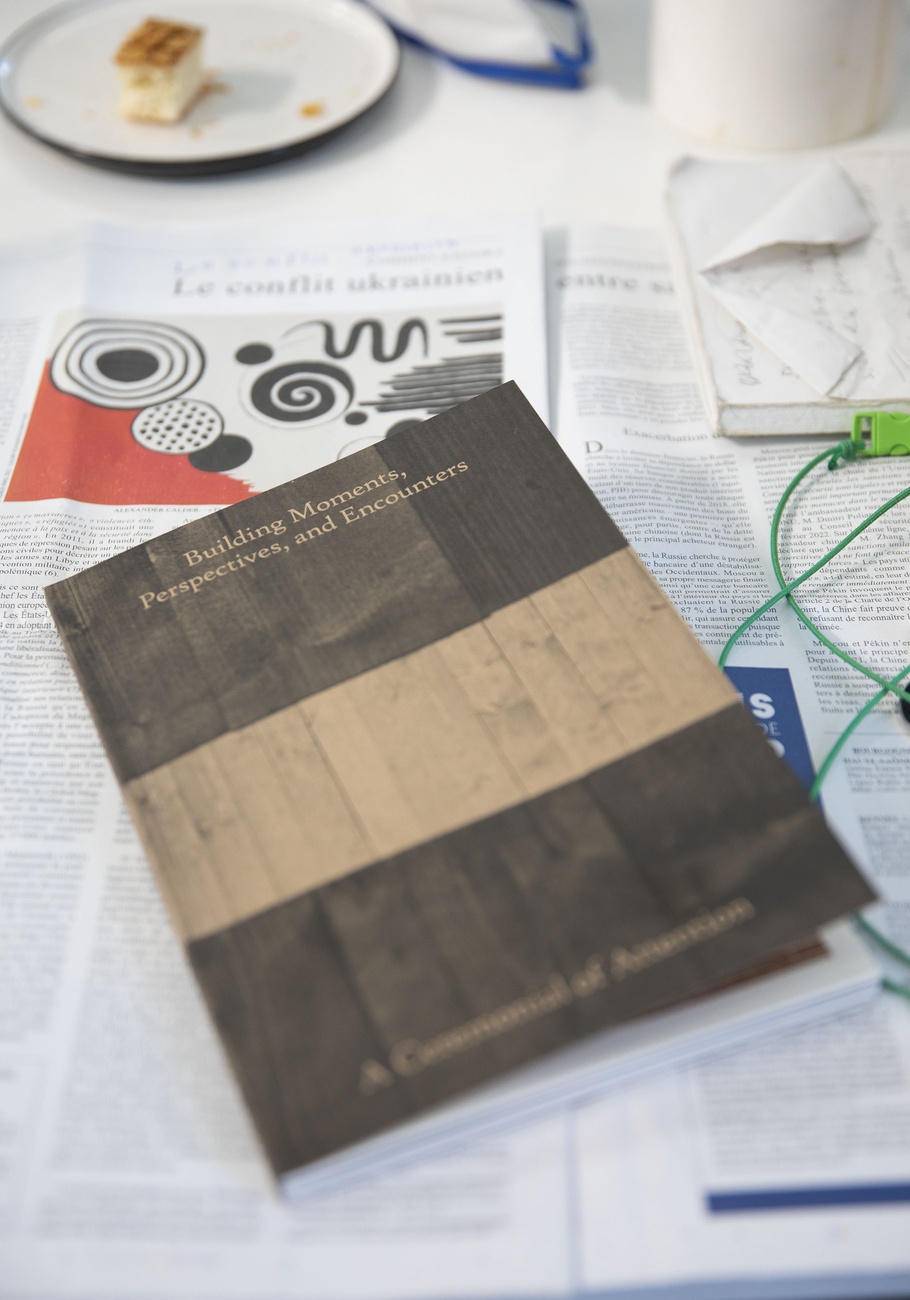Building Moments, Perspectives, and Encounters. A Ceremonial of Attention
, 2022
Building Moments, Perspectives, and Encounters. A Ceremonial of Attention
CreditBuilding Moments, Perspectives, and Encounters. A Ceremonial of Attention documents and expands on the two exhibitions conceived by Hanns Lennart Wiesner, Im Garten der Blicke – Ein Dialog zwischen Körper und Sammlung (In the Garden of Gazes – A Dialogue between Body and Collection) at Kunsthaus NRW Kornelimünster in Aachen and 250.000 Paintings at Marta Herford. The publication appears in the context of the scholarship programme Residence NRW⁺, which is associated with the Kunsthalle Münster since 2020.
Both 250.000 Paintings and Im Garten der Blicke – Ein Dialog zwischen Körper und Sammlung address questions of the permeability of art institutions, such as museums or collections. Through mostly invisible structures, they create boundaries between the inside and the outside and are thus part of an ideological project. The elements that find a way into the institution simultaneously define those that remain excluded. This dialectic of inside and outside contained in the institutions materializes in Im Garten der Blicke – Ein Dialog zwischen Körper und Sammlung in the form of a scenography, which produces a physical, yet partially permeable boundary, and in 250.000 Paintings in the form of the projection of a collection of artifacts excluded from the institution onto the museum’s façade, which is solely visible from its outside.
What role does the audience’s human bodies play in the presentation of art, and what synergies occur when collection works are brought into dialogue with contemporary works from different artistic disciplines? How can an art collection today be considered not only in a historicizing way, but also in terms of the relevance of its individual elements? How do the spatial conditions, procedure and dramaturgy of the reception of art influence the affects of the audience?
At a time when the human body of the other is perceived as potentially dangerous and our own is partially in isolation, it is all the more important to understand our bodies not merely as a functional shell, but as a portal to the world. The presence of the human body is not only an epidemiological risk, but also a political act, and it further promotes a perception of art that is not exclusively visual or auditory.





